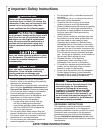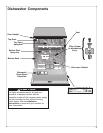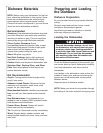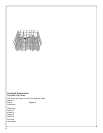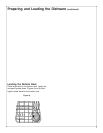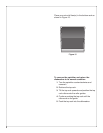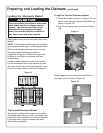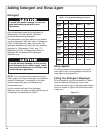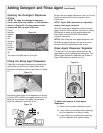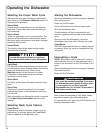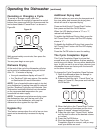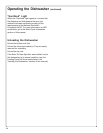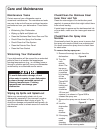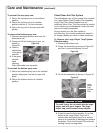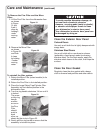
10
NOTE
: If you do not know the hardness of your
water supply, use 15ml of detergent. Increase the
amount of detergent, if necessary, to the least
amount required to get your dishware and
kitchenware clean.
Use the measuring lines in the detergent
dispenser cup as a guide to measure the amount
of detergent recommended in Table 1.
Adding Detergent and Rinse Agent
Rinse Agents
To achieve proper drying, always use a liquid
rinse agent, even if your detergent contains a
rinse agent or drying additive.
Filling the Detergent Dispenser
Fill the dispenser cup as recommend in Table 1.
Slide the detergent dispenser cover in the
direction shown in Figure 19A and press it down
firmly as shown in Figure 19B so that the cover
snaps shut.
Use only detergent specifically designed for
dishwashers. For best results, use fresh
powdered dishwashing detergent.
This dishwasher uses less water so you need to
use less detergent. With soft water, 1 tablespoon
(15ml) of detergent will clean most loads. The
detergent dispenser cup has lines that measure
detergent to 1 tablespoon (15ml) and 1.75
tablespoons (25ml). 3 tablespoons (45ml) of
detergent will completely fill the detergent
dispenser cup.
Detergent
Wash
Cycle
Heavy
Wash
Normal
Wash
Light
Wash
Table 1 - Recommended Detergent Amount
Hard Medium Soft
45
25-45
Unit
ml
ml
ml
Tbsp
Tbsp
Tbsp
45
25-45 25 15-25
25 15-25 15
3 3 1.75 to 3
1.75 to 3
1.75
1 to 1.75
1.75 1 to 1.75 1
Water Type
Figure 19
A
B
To avoid dishware damage, do not use too
much detergent if your water supply is soft.
Using too much detergent in soft water may
cause etching in glassware.
To avoid dishwasher damage, do not use
hand dishwashing products in your
dishwasher.
Sens-a-
Wash
ml
Tbsp
25-45
25 15-25
1.75 to 3
1.75
1 to 1.75
Quick
Wash
ml
Tbsp
25 15-25 15
1.75 1 to 1.75 1
Rinse
Only
None
None None



